Discover types of fish in the red sea
The Red Sea is famous for its clear water and coral reefs that are vibrant, this body of water has amazing marine life, from vibrant reef fish such as clownfish or parrotfish to more imposing species such as barracudas, groupers, and whale sharks.
If you’ve ever thought of going to a sea aquarium, the Red Sea provides the closest experience you can get.
This article presents the most beloved and captivating types of fish in the red sea, providing tips on how to spot them safely and suggesting ideal dive sites that make the most of your underwater adventure.
Types of fish in the Red Sea
The Red Sea is home to an array of marine species, estimates range from 1,100 to 1,200 of different kinds.
Clownfish (Anemonefish)
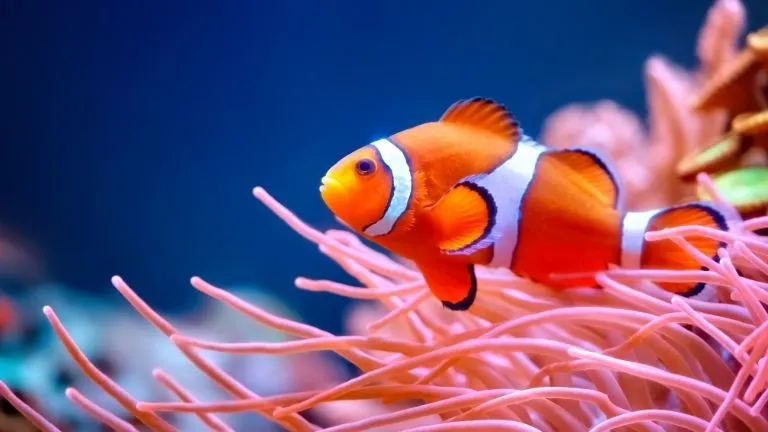
Red Sea Clownfish, also known as the Red Sea Anemonefish, Amphiprion Bicinctus, can be found throughout the Red Sea.
It’s one of the most recognizable types of fish in the Red Sea, often seen hiding among the tentacles of sea anemones.
Butterflyfish and Angelfish
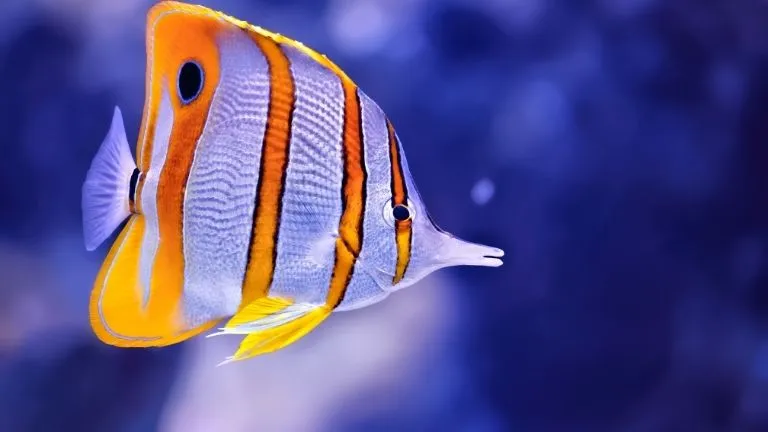
Angelfish and butterflyfish are both colourful, tropical fish commonly seen on coral reefs; however, they are part of different families and possess a few key distinct characteristics.
These fish species are the most beloved types of fish in the Red Sea for their vibrant patterns and graceful movements.
Butterflyfish are usually smaller with a more delicate look and a small mouth that resembles a tweezers.
Angelfish tend to be larger and possess a larger body and a larger mouth that is designed to eat sponges, algae, as well as soft corals.
Bannerfish
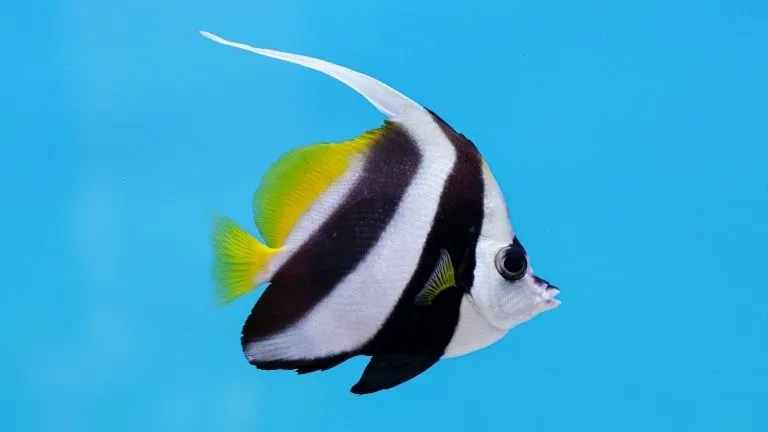
Bannerfish, also known as false Moorish Idols, are distinguished by their smaller snout and less ornate striping of black, white, and yellow.
Both longfin bannerfish and schooling-type bannerfish are native to the Indo-Pacific.
The relatively small coral fish can reach a maximum size of 18-21 cm.
Parrotfish

Parrotfish is one of the best types of fish in the red sea; colourful, herbivorous species of fish are found worldwide in tropical and subtropical waters, especially around coral reefs.
Their beak-like teeth are what they use to feed on small coral pieces and algae, Parrotfish are unique in their ability to reduce coral to sand.
Groupers
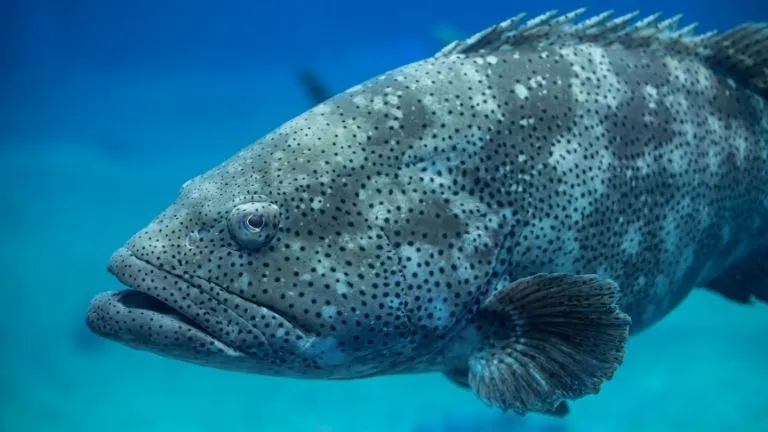
The groupers are a predatory ray-finned species with a large mouth and a heavy body.
The subfamily Epinephelinae of the Serranidae is found in all warm waters around the world.
Vibrant colours and patterns characterize some species, while others have a more muted appearance.
Anthias
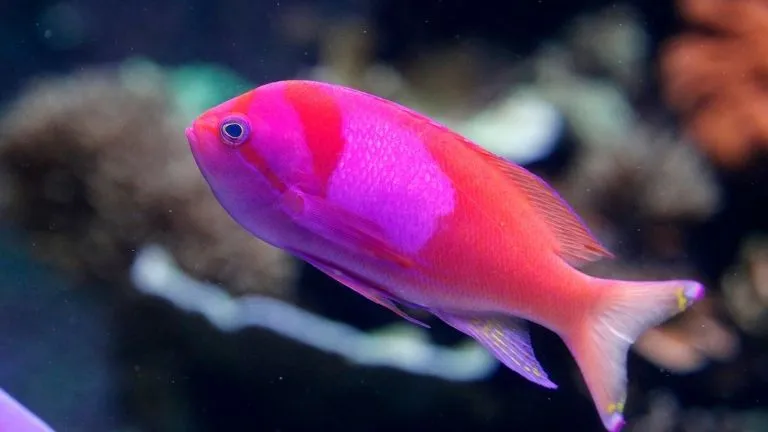
Anthias is a genus of small, colourful ray-finned crayfish belonging to the Serranidae family and subfamily Anthiadinae.
They are often found on coral reefs, the plankton-feeding fish are well known for their vivid colours, schooling behaviour and active feeding.
Triggerfish
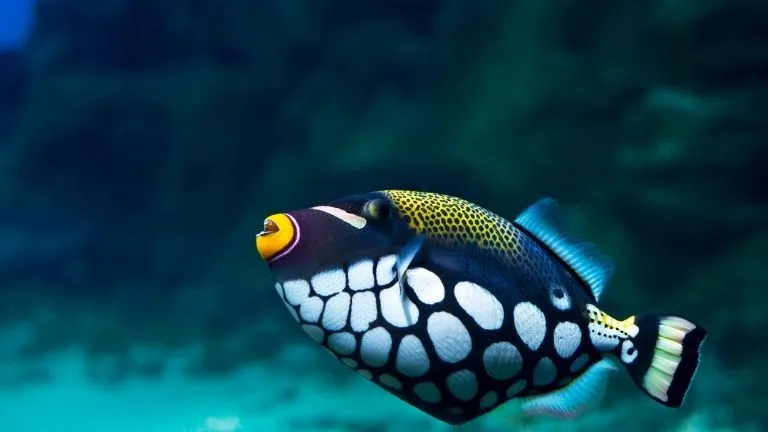
The triggerfish is one of the most common types of fish in the red sea with rayfinned fins.
Triggerfish can be identified by their bright colours and the way that they spin on their dorsal spine. They are found in shallow waters and tropical and subtropical seas near coral reefs.
Around 40 species have developed unique defence mechanisms which allow them to defend and protect nests aggressively.
Barracuda
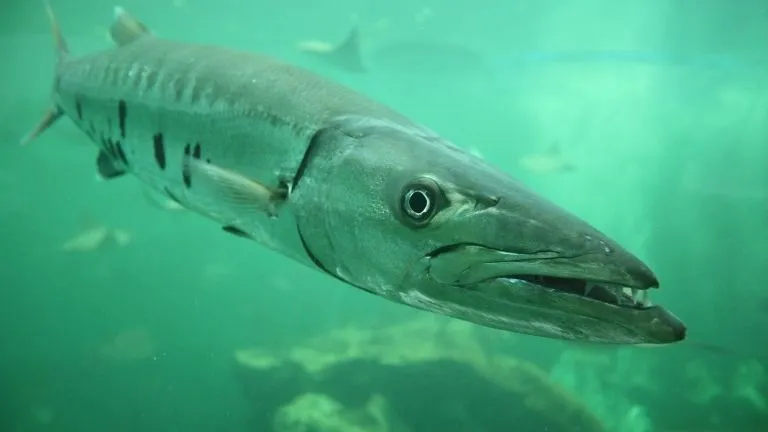
Barracuda is a term used to describe a predatory ray-finned species of fish that is known for its long body, sharp teeth and aggressive hunting style.
Napoleon Wrasse
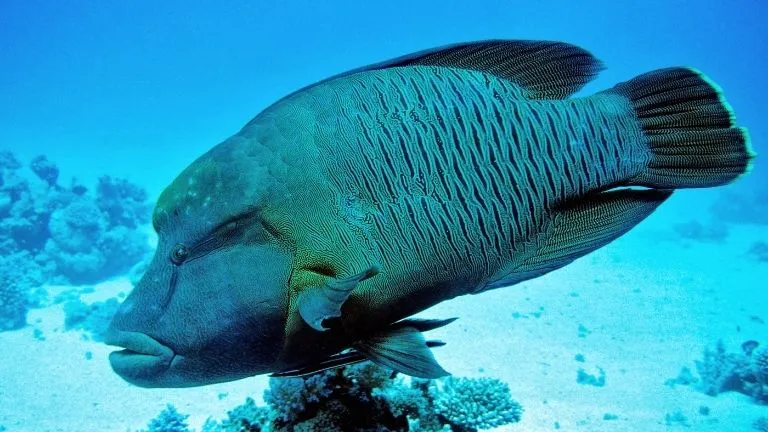
The males of these fish are typically larger than the females. Napoleon wrasses can reach 300 kg and lengths over 2 meters.
The Napoleon wrasse’s uniqueness is enhanced by its long life span of up to 50 years, but it also makes it vulnerable.
Moray Eels
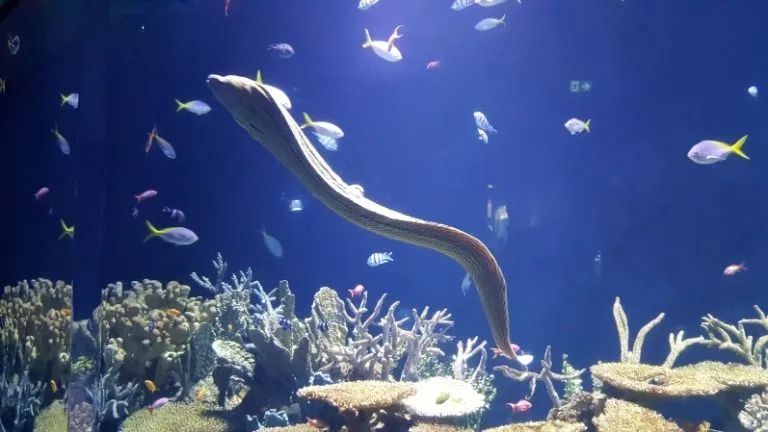
- The moray eel is characterized by a long and slender body that looks like a snake.
- Some species have nodular, low-density teeth, while others have sharp, long canine teeth.
- They can reach up to 3 metres in length and 30 centimetres wide.
- The colour can range from black to brownish yellow with a pale underneath.
Sharks

Sharks, like other fish, are cold-blooded, live in the water, and have fins.
Sharks have a skeleton made from cartilage, not bone.
Lionfish
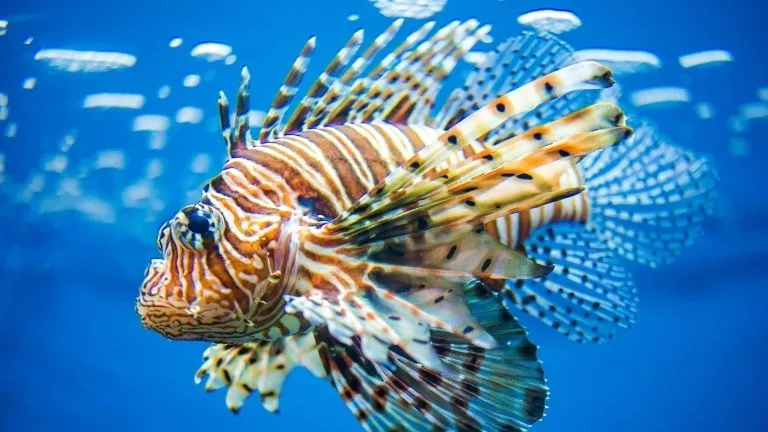
Named ‘lionfish’ because they resemble the mane of a majestic lion, the lionfish is easily identifiable by their flowing dorsal and pectoral fins.
Stonefish
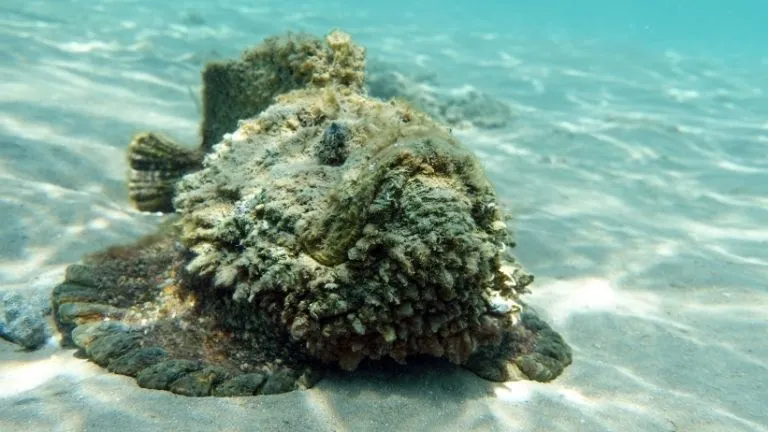
The stonefish is a master of camouflage, they blend so well with their environment that even humans who are SCUBA diving have difficulty spotting them.
Stonefish are almost always perfectly still on the seafloor, their habitat being coral reefs and rocks.
Blue-Spotted Stingrays
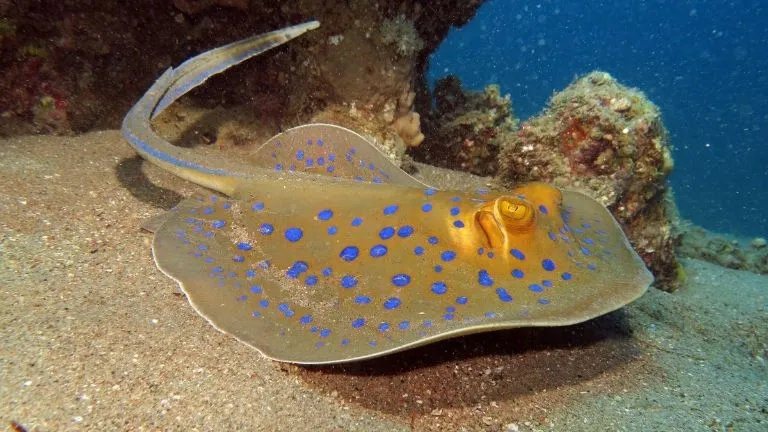
The blue spots on their bodies are what give them their name.
They dig in the sand to hunt shallow-dwelling animals such as shrimp and crabs.
Electroreception is used to locate their prey by picking up subtle temperature changes and electrical fields produced by other animals.
Blue spotted Ribbon tail Rays rarely burrow themselves, unlike most other rays.
They do so when ambushing prey or when migrating in large groups into shallow sandy areas.
Whale Sharks

The whale shark is one of the largest types of fish in the red sea alive; they travel long distances in search of food and feed on plankton.
All tropical oceans on the planet are home to whale sharks.
These gentle giants are easily identifiable by their white spots and are popular with divers and snorkelers at the sites where they gather off the coast.
Potentially Dangerous Fish in the Red Sea
Sharks, moray eels and stingrays are all dangerous species that can be encountered in the Red Sea.
Lionfish
Lionfish stings are known for their beautiful appearance, but they can also cause severe pain and, in some cases, even death.
Stonefish
Stonefish are considered one of the world’s most venomous species. They have venomous spines along their pelvic, dorsal and anal fins.
They are difficult to see because of their camouflage, and the venom they produce can be deadly. This is one of the most feared red sea fish species.
Scorpionfish
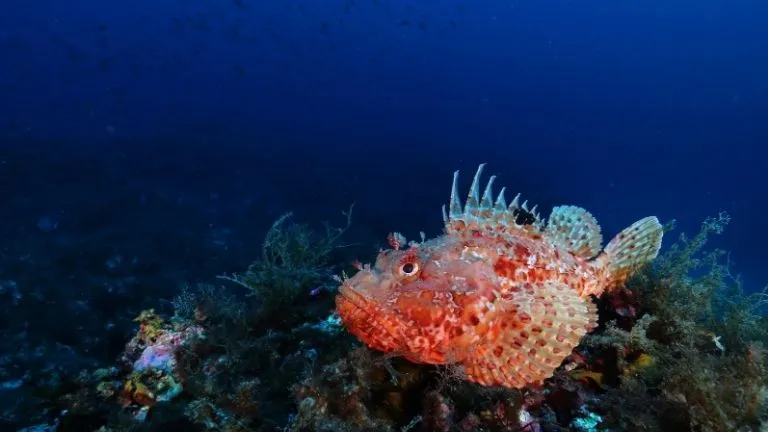
They are venomous, well camouflaged and pose a danger to divers and swimmers.
Jellyfish
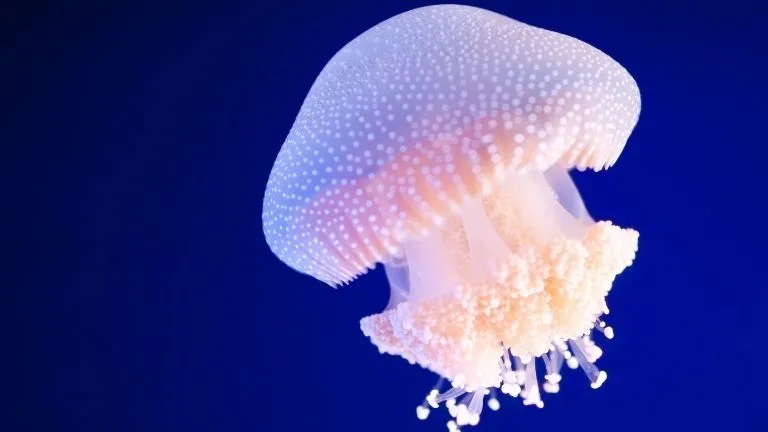
Red Sea jellyfish may sting you, but it is rare for them to cause death.
Pufferfish
Some pufferfish species have toxins stored in their skin or organs. This makes them unsafe to eat.
Read more: Top things to do in Hurghada Egypt 2025 – Must-See Fun
Common Local Consumable Fish
Common locally consumed fish include Tilapias, seabass, and mullet, you can find them in many local restaurants and markets.
According to search results, salmon, tuna, and cod are also popular choices. These are well-known Red Sea fish to eat and represent a large part of the fish from the Red Sea diet in coastal towns.
Reserve Your Red Sea Fishing Adventure Today
Enjoy the beauty of the Red Sea and spend quality time with family or friends during our red sea fishing trip in Marsa Alam.
Private and peaceful
A private fishing trip is available for your group of up to six people.
Enjoy a quiet, peaceful atmosphere on the open waters.
All-inclusive Experience
Everything is taken care of from the moment you are picked up at your accommodation, including bait and fishing equipment.
A local guide will also help you to try out different techniques, such as trolling or bottom fishing.
Catch different fish
There are many species to choose from, including tuna, mahimahi, and snapper. These popular Egyptian fish are frequently caught on private trips.
Lunch cooked on board
If you catch enough fish, or If you don’t catch enough fish, your meal will be served as a tasty lunch of chicken, rice, kofta, and salad.
Enjoy a comfortable trip
We provide water and soft drinks to keep you hydrated.
Egypt Hero Tours is attached to responsible fishing practices.
We only fish in specified areas and protect marine life.
9 Best Practices for Divers and Snorkelers
- Always dive with a friend; it is important to have a buddy in the event of an emergency.
- Be sure to check the weather and water conditions before entering.
- Due to the unexpected conditions and landing areas, jumping from a boat moving can cause accidents.
- Use buoyancy control techniques to avoid damaging or touching the reef.
- Use a surface marker if you are diving in an area with boat traffic.
- Avoid touching marine life; do not chase them or feed them.
- Do not kick up sediment when using fins; this can cause coral to be smothered.
Make sure your mask, fins, and snorkel are comfortable and fit well. - Learn how you can remove water from your mask.
- Practice controlled breathing techniques.
Read more: Guide to fishing in Hurghada Egypt 2025
Best Times of Year for Specific Sightings (e.g., Sharks, Whale Sharks)
The best times to see specific shark species in the Red Sea, especially Marsa Alam or Hurghada, vary by species.
Whale Sharks Most commonly, you can see them from May to August.
The best time to see a hammerhead shark is between June and September.
From April to June, you can often see silky sharks around Marsa Alam, Daedalus Brothers and Elphinstone.
Reef Sharks can be seen all year round, but visibility is at its best between March and May.
Choosing the Right Dive Sites for Your Goals
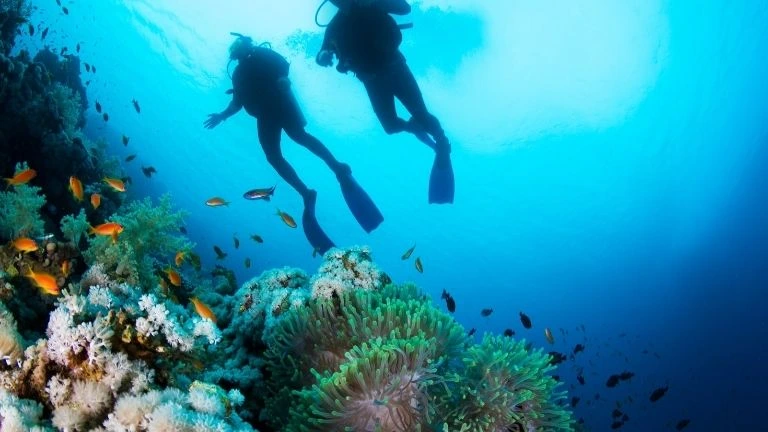
Diving for Beginners
Abu Dabbab Bay, Marsa Shagra, and other dive sites are ideal for beginners and experienced divers who want to improve their diving skills.
Both dive sites are easily accessible from the shore and offer calm currents with plenty of marine life, such as turtles, colourful reef fish and coral.
Underwater Photographers
Elphinstone Reef, Sha’ab Samadai Dolphin House, and the surrounding area are ideal for capturing vibrant corals, dramatic drops, and close encounters with dolphins and reef sharks.
The coral formations were beautifully lit, and the visibility was excellent.
These areas also host unique red sea creatures and red sea coral reef animals perfect for macro shots.
For Advanced Divers
Elphinstone Reef should not be missed. It is known for its steep walls, strong currents and the opportunity to see oceanic whitetip sharks, hammerheads and other large pelagics. This site is best suited to experienced divers who have deep diving certification.
For Wreck Enthusiasts
While Marsa Alam’s reefs and marine life are more well-known, Safaga or Port Ghalib, both nearby, offer wreck diving trips like the Salem Express or Abu Ghusun.
This is a great opportunity for those who want to learn about submerged ship history.
For Nature Lovers
For those who want to experience marine life in a relaxed environment, Marsa Egla and Marsa Mubarak are great choices.
They are famous for dugongs (sea cattle), turtles and colourful reefs in shallower water. These gentle animals in the Red Sea offer memorable encounters.
Read more: 15 Best Beaches in Hurghada | Tips for Visiting Hurghada
Best Hurghada Tours
Check our tours in Hurghada and book your seat Now
6 Essential Tips for Red Sea Encounters
- Swim only in designated areas.
- Enjoy the Red Sea in safety and comfort.
- Never touch marine animals or coral reefs.
- Be sure to wear the appropriate clothing and keep hydrated.
- Be prepared to face the environment, prioritize safety and respect marine wildlife.
- Plan your diving and snorkeling trips well, pay attention to the time and depth restrictions and ensure that you and your buddy are both safe.
FAQs About types of fish in the Red Sea
What are the giant fish in the Red Sea?
In the Red Sea, you can find giant fish such as Napoleon wrasses, giant trevally, dogtooth tunas, groupers and giant barracudas, in deeper waters, reef sharks are sometimes seen.
Are all Red Sea fish found on coral reefs?
Not all Red Sea fish can be found on coral reefs, there are many fish in the Red Sea Egypt, but they also inhabit seagrass beds and lagoons.
Are there any fish in the Red Sea that are aggressive towards humans?
Yes, several fish species in the Red Sea are aggressive towards humans, but attacks are rare.
Sharks such as the mako, tiger, and oceanic whitetip shark are dangerous, Triggerfish, moray eels and scorpionfish are also aggressive species.
What should I do if I encounter a dangerous fish?
- Your primary objective is to avoid the dangerous fish.
- Avoid contact and seek assistance.
- Avoid cornering the fish or touching it.
- If you get stung, or bitten by a jellyfish, seek medical attention immediately.
Some venom can be neutralized by hot water.
Is it safe to swim with sharks in the Red Sea?
Yes, it is safe to swim in the Red Sea with sharks when professionals guide you. Most species are not aggressive and will behave well if they are treated with respect.
Can I touch or feed fish in the Red Sea?
You should not feed or touch fish in the Red Sea, it can damage marine life and disrupt natural behavior.
Is fishing allowed everywhere in the Red Sea?
No, fishing is not permitted everywhere in the Red Sea.
Fishing is restricted or banned in certain areas, notably those that have coral reefs and marine reserves.
In the Egypt Red Sea fish zone, for example, fishing is prohibited around the Far Islands and Ras Mohamed. Some species, such as sharks, turtles and stone fish Red Sea, are protected, and fishing is not permitted.

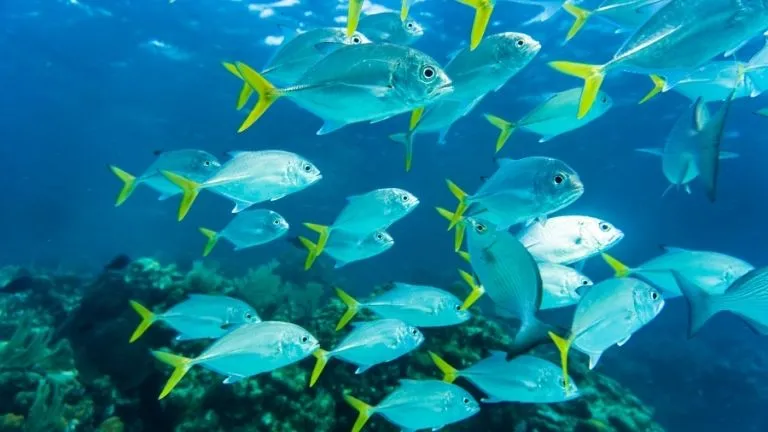



Comments are closed